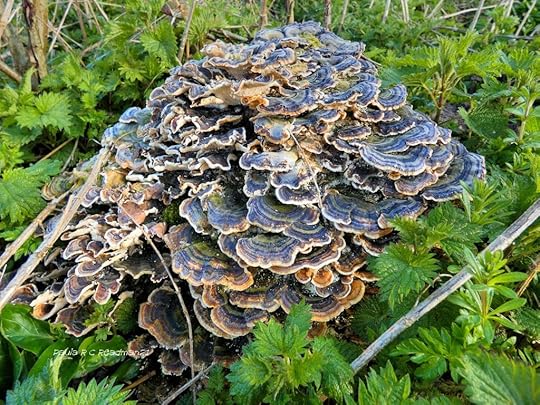The Way Through The Woods
They shut the road through the woods
Seventy years ago.
Weather and rain have undone it again,
And now you would never know
By Rudyard Kipling’s poem The Way Through the Wood, Published with “Marklake Witches” in Rewards and Fairies (1910).

Rudyard Kipling’s The Way Through The Wood is one of my favorite classic poems. It reminds me so much of my love of walking through woods as a child in hope of coming face to face with deers, foxes or badgers. I thought I would use the poem as the opening to this post along with some of the photos I took yesterday.
The walk we took lasted for 126 minutes as we headed up into Tarecroft wood. The Tarecroft wood and Rivenhall Thick are two ancient woods that can be traced through medieval surveys, sixteenth and seventeenth century maps. We passed Whiteheads Farm as we made our way to Tarecroft Wood first to then circle round back through Rivenhall Thick on our way home.
 Here on this map you can see how close these woods are together.
Here on this map you can see how close these woods are together. Both of these woods were grown for their valuable resources when Cressing Temple was owned by the Knights Templars. They were at one time much larger than the small remnants we walk through now. The underwood are the smaller trees and shrubs that grow beneath taller straighter trees that are grown for timber trees. This is known the second crop, or underwood and coppice.
Coppicing is a method of producing a huge amount of fast growing, sustainable timber without the need to replant. Coppiced trees already have a fully developed root system, so regrowth is rapid. Different species of trees and shrubs react differently to being coppiced. The stump appears moribund all through the first year after coppicing and then springs into life the following year. This is done on rotation. A small area of a woodland is cut each year in sequence leaving the areas uncut to grow on for between 15 and 20 years for chestnut, and about 7 years for hazel. When an area of coppice is cut, it is all cut down to create a clearing. This allows wild flowers to grow such as primroses, wood anemones, dog’s mercury and, of course, our beautiful English bluebell.
 Dog’s Mercury and wood anemone, also known as Windflower
Dog’s Mercury and wood anemone, also known as Windflower This periodic coppicing encourages the individual trees to live for up to hundreds of years. If the coppice cycle is managed correctly it can increase biodiversity in the woodland because of the beneficial effects of varying light levels reaching the woodland floor, and the range of different aged trees and stools in the woodland. The wood is used for fuel, charcoal, hurdlework, and fencing. Today when walking through Rivenhall Thicks you can see where it is still being worked for coppicing. As a place of work, we must understand its importance as a working wood for the future of our British wildlife. Quite often you can see tracks of deer and muntjac as they move across the countryside is search of shelter and seclusion.
 Path out of Tarecroft Wood
Path out of Tarecroft WoodAfter leaving Tarecroft Wood, which hasn’t been worked for many years, on entering Rivenhall Thick you can see the difference not just in the variety of wild flowers and wildlife but you can see a working wood in action as it would have been done for hundreds of years. It’s like a living museum when humans worked hand in hand with Mother Nature.
It is underneath the coppice and heath, and the thin anemones. Only the keeper sees that, where the ring-dove broods, and the badgers roll at ease, there was once a road through the woods.
by Rudyard Kipling from The Way Through the Wood
First slide picture is of a chaffinch nest. A firmly woven structure made chiefly of moss and lichen, together with blades of grass, birch bark, hair, feathers, wool and leaves. Second slide: Turkey Tail (bracket fungi) Third slide: Moss covered log with ivy. Fourth slide: The bridge to Rivenhall House. Fifth slide: Rivenhall House.





Have a great day.
I look forward to sharing the changing season with you in future posts.



